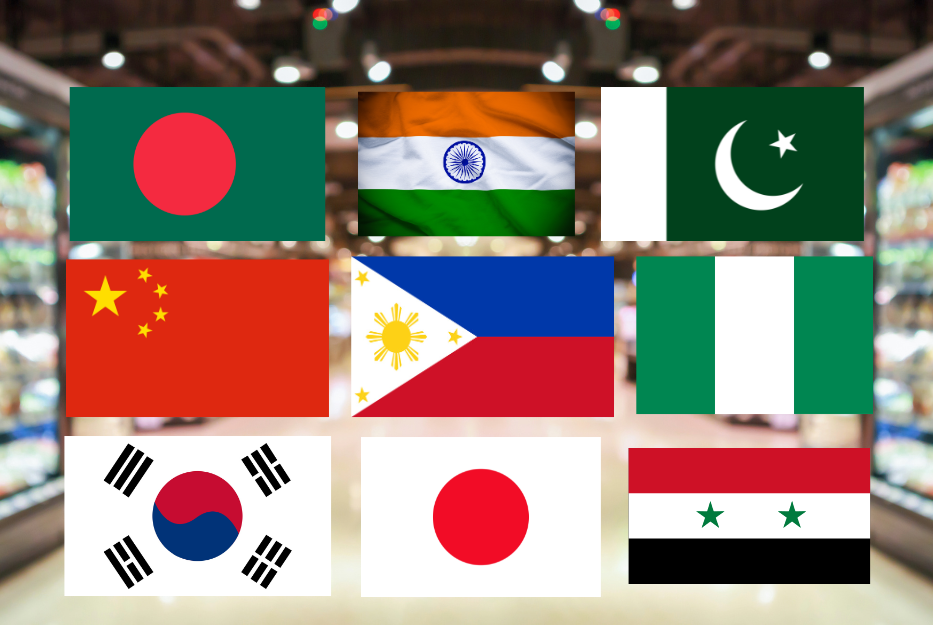How to Find Ethnic Grocery Stores in Canada (step-by-step guide)

**Please review the disclaimer at the end of this document before reading or using this guide.
One of the comforts of home that many new immigrants miss is familiar food. Fortunately, Canada’s multicultural landscape means there are many ethnic grocery stores across the country where you can find ingredients and products from your home country. Whether you’re looking for spices, specialty produce, or traditional snacks, this guide provides information on how to find ethnic grocery stores in Canada.
Step 1: Research Online
- Use Search Engines:
- Start by searching for ethnic grocery stores in your city or neighborhood using search engines like Google. Use keywords such as “Indian grocery stores in Toronto,” “Chinese supermarkets in Vancouver,” or “Middle Eastern groceries in Montreal.”
- Search for specific products or ingredients, which can often lead you to stores that specialize in those items.
- Google Maps:
- Use Google Maps to find nearby ethnic grocery stores. Simply type in the type of store you’re looking for (e.g., “Korean grocery store” or “Halal market”) and explore the options that appear on the map.
- Google Maps reviews and photos can also help you assess the quality and selection of products at each store.
- Ethnic Grocery Store Directories:
- Some websites and online directories list ethnic grocery stores across Canada. These directories often categorize stores by the type of cuisine or cultural focus.
- Examples include Zabihah for Halal grocery stores and Find My Food for general ethnic grocery stores.
- Social Media:
- Many ethnic grocery stores have social media profiles where they post about new products, sales, and special events. Follow local stores on platforms like Facebook, Instagram, and Twitter to stay updated.
- Join community groups on Facebook or Reddit specific to your city or cultural community. These groups often share recommendations for ethnic grocery stores.
Step 2: Visit Cultural Neighborhoods
- Identify Ethnic Enclaves:
- Major Canadian cities often have neighborhoods with a high concentration of residents from specific cultural backgrounds, and these areas typically feature a variety of ethnic grocery stores.
- Examples include:
- Toronto: Little India, Chinatown, Little Italy, Koreatown, and Greektown.
- Vancouver: Richmond (known for its Asian markets), Punjabi Market, and Commercial Drive (Italian and other Mediterranean stores).
- Montreal: Little Italy, Chinatown, and Parc-Extension (Greek, South Asian, and Middle Eastern stores).
- Edmonton: Lucky supermarket (Asian), Alif Halal Meat & Grocery (Bangladeshi), United grocers supermarket, Little Italy, Chinatown
- Explore the Neighborhood:
- Spend time walking around these neighborhoods, visiting different grocery stores, and exploring other ethnic shops and restaurants. This hands-on approach allows you to discover hidden gems and get a feel for what each store offers.
- Community Recommendations:
- While in these neighborhoods, don’t hesitate to ask locals for recommendations on the best grocery stores for specific products or ingredients.
Step 3: Check Supermarket Chains with Ethnic Sections
- Mainstream Supermarkets:
- Many large supermarket chains in Canada, such as Loblaws, Sobeys, and Metro, have sections dedicated to international foods. These sections often include a variety of spices, sauces, canned goods, and snacks from around the world.
- Some chains, like T&T Supermarket, are specifically focused on Asian groceries and have multiple locations in cities like Toronto, Vancouver, and Calgary.
- Explore Ethnic Aisles:
- Look for the “ethnic” or “international” aisles in these supermarkets. While they may not have the extensive selection of a specialized ethnic grocery store, they can still provide basic staples and popular items from various cuisines.
Step 4: Use Delivery Services and Online Grocery Stores
- Online Grocery Stores:
- Many ethnic grocery stores offer online shopping and delivery services, allowing you to order products from the comfort of your home. This is especially convenient if you don’t live near a physical store that carries the items you need.
- Examples include:
- Well.ca: Offers a variety of international foods and products.
- Patel Brothers: Specializes in Indian groceries and offers online shopping.
- T&T Supermarket: Offers an online store with delivery to select regions.
- Delivery Apps:
- Apps like Instacart and Cornershop partner with local ethnic grocery stores to provide delivery services. You can browse products and place orders directly through the app.
- Specialty Food Websites:
- Some online retailers specialize in importing and selling ethnic foods and ingredients. Websites like EthniStore offer a wide range of products from different cultures.
Step 5: Ask for Recommendations
- Community Centers and Cultural Associations:
- Visit community centers or cultural associations that cater to your ethnic background. These organizations often have bulletin boards, newsletters, or staff who can recommend where to find ethnic groceries.
- Word of Mouth:
- Ask friends, neighbors, or coworkers who share your cultural background for their favorite ethnic grocery stores. Personal recommendations are often the best way to discover quality stores.
- Online Forums and Expat Groups:
- Participate in online forums and social media groups for newcomers and expatriates in Canada. Members often share tips on where to find ethnic groceries and other essentials.
Step 6: Explore Farmers’ Markets and Specialty Shops
- Local Farmers’ Markets:
- Some farmers’ markets in Canada feature vendors who sell ethnic produce and specialty items. Check the market’s vendor list or ask vendors if they carry specific products.
- Specialty Shops:
- Explore specialty shops that focus on specific food categories, such as cheese shops, spice shops, or tea shops. These stores often carry high-quality products that are difficult to find elsewhere.
- Cultural Festivals:
- Attend cultural festivals and food fairs in your city. These events often feature vendors selling ethnic foods and groceries, providing an opportunity to discover new stores and products.
Additional Tips for New Immigrants
- Price Comparisons:
- Compare prices between different stores and online options to find the best deals on your favorite ethnic products.
- Stock Up on Essentials:
- When you find a store that carries your favorite products, consider buying in bulk or stocking up on non-perishable items to save time and ensure you always have what you need.
- Learn About Canadian Ingredients:
- While searching for ethnic groceries, explore local Canadian ingredients and produce that can be incorporated into your traditional recipes.
- Stay Open to New Flavors:
- Canada’s diverse food scene offers an opportunity to try new cuisines and flavors. Be open to experimenting with different ethnic foods that are new to you.
Finding ethnic grocery stores in Canada allows new immigrants to enjoy the flavors of home while exploring the diverse culinary landscape of their new country. By researching online, visiting cultural neighborhoods, exploring supermarkets and online stores, and asking for recommendations, you can discover the best places to shop for the ingredients and products that make you feel at home. Welcome to Canada, and happy shopping!
**DISCLAIMER: This document was prepared based on information gathered from various online sources. While our aim is to provide accurate and helpful information to newcomers in Canada, Active Action cannot be held responsible for any actions, outcomes, or situations that may arise from the use of this document. We strongly recommend that you verify any details with official sources or relevant authorities if you have any doubts or uncertainties about any information provided in this document. If you have any specific questions about the information in this document, or if you notice any inaccuracies or missing information, please inform us immediately through the contact form. We will respond to you as soon as possible and/or update the information as necessary.


